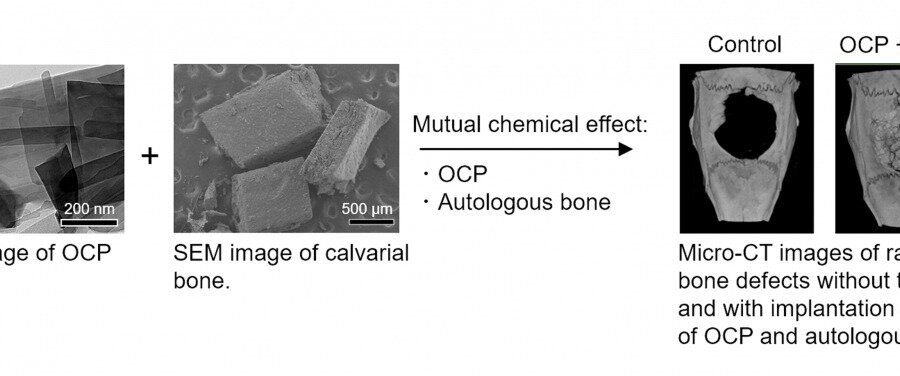
A combination of a synthetic material with natural bone fills bone defects and encourages tissue regeneration, with potential for use during surgical procedures. The research was carried out at the Tohoku University Graduate School of Dentistry in Japan, and the results were published in the journal Science and Technology of Advanced Materials.
“Surgeons often use a patient’s own bone when they operate to fill and repair defects, but it can be hard to get enough amount of bone,” says Tohoku University biomaterials researcher Osamu Suzuki. “Reliable synthetic bone substitutes could make a big difference and this material seems to be one of the most promising.”
The synthetic bone substitute material is called octacalcium phosphate (OCP). Previous studies have shown that OCP can promote bone formation and replace it with new bone over time. In the new study, Suzuki and his colleagues investigated the ability of OCP mixed with autologous bone to repair bone defects.
Working in rats, the researchers used OCP alone, bone from the animals, or a mixture of the two to fill a critical sized defect that cannot repair spontaneously in the skull. Bone formation of the natural material was higher than OCP alone. However, the researchers found that cells related to bone regeneration were accumulated by OCP mixed into natural (autologous) bone material for longer periods, suggesting it could replace some of the natural bone currently used in many clinical applications.
Histological analysis of new bone formation in the rats, and in a parallel set of cell culture experiments, showed that a chemical interaction between the OCP and mineral crystals in the bone activated the regenerative properties of the mixture.
Suzuki says the findings suggest that OCP could be used to reduce the amount of autologous bone needed for bone repair.
Source: Read Full Article
